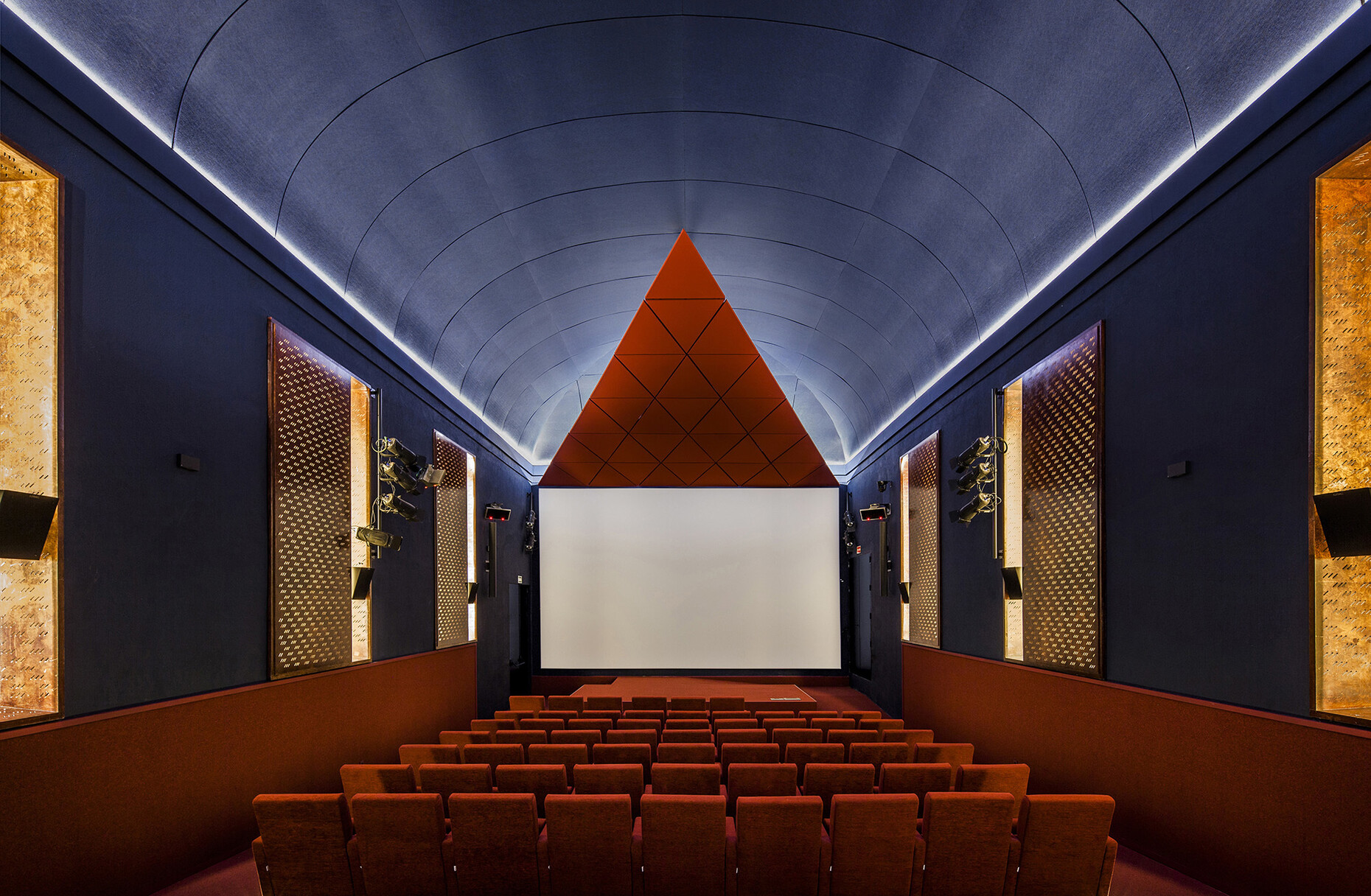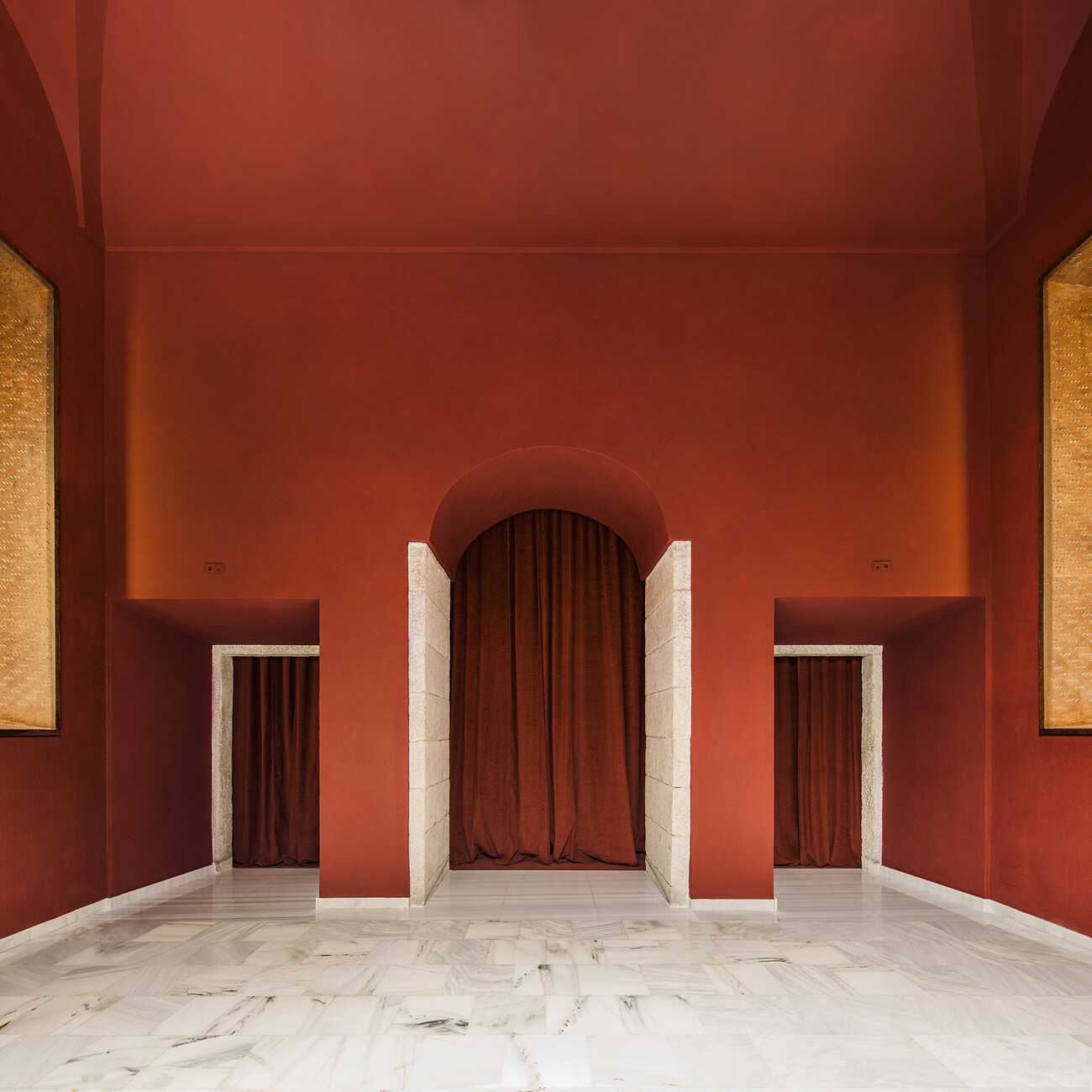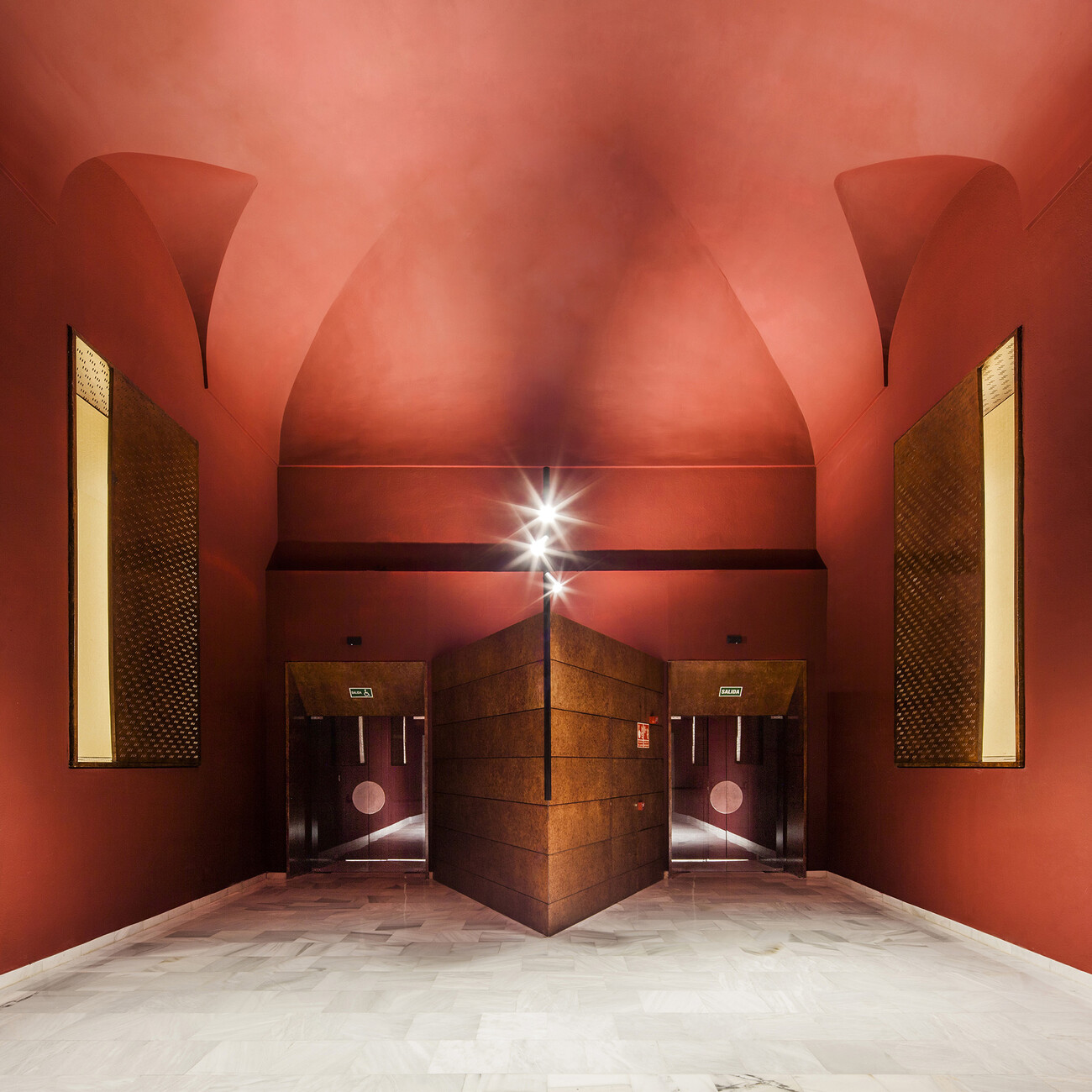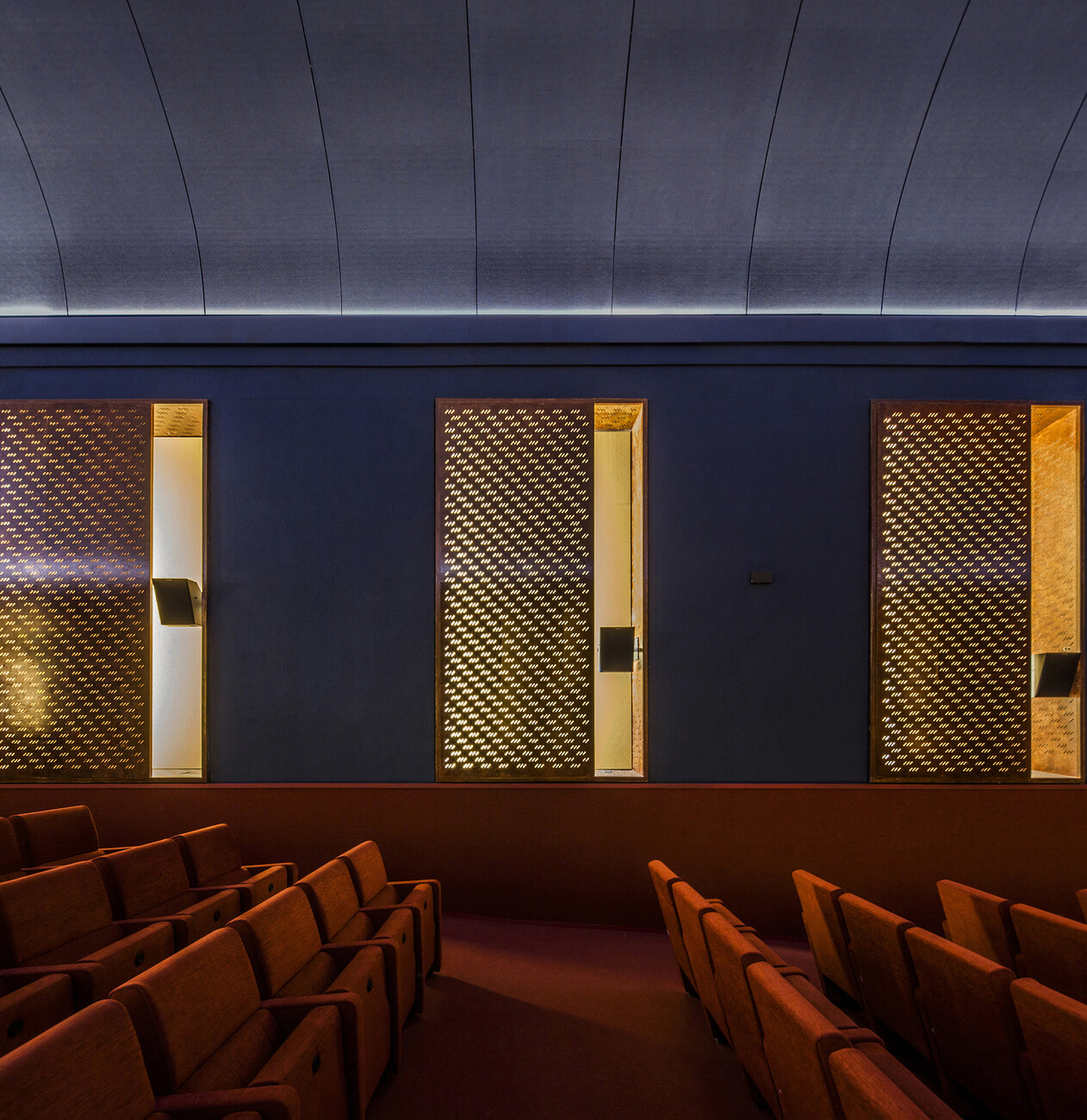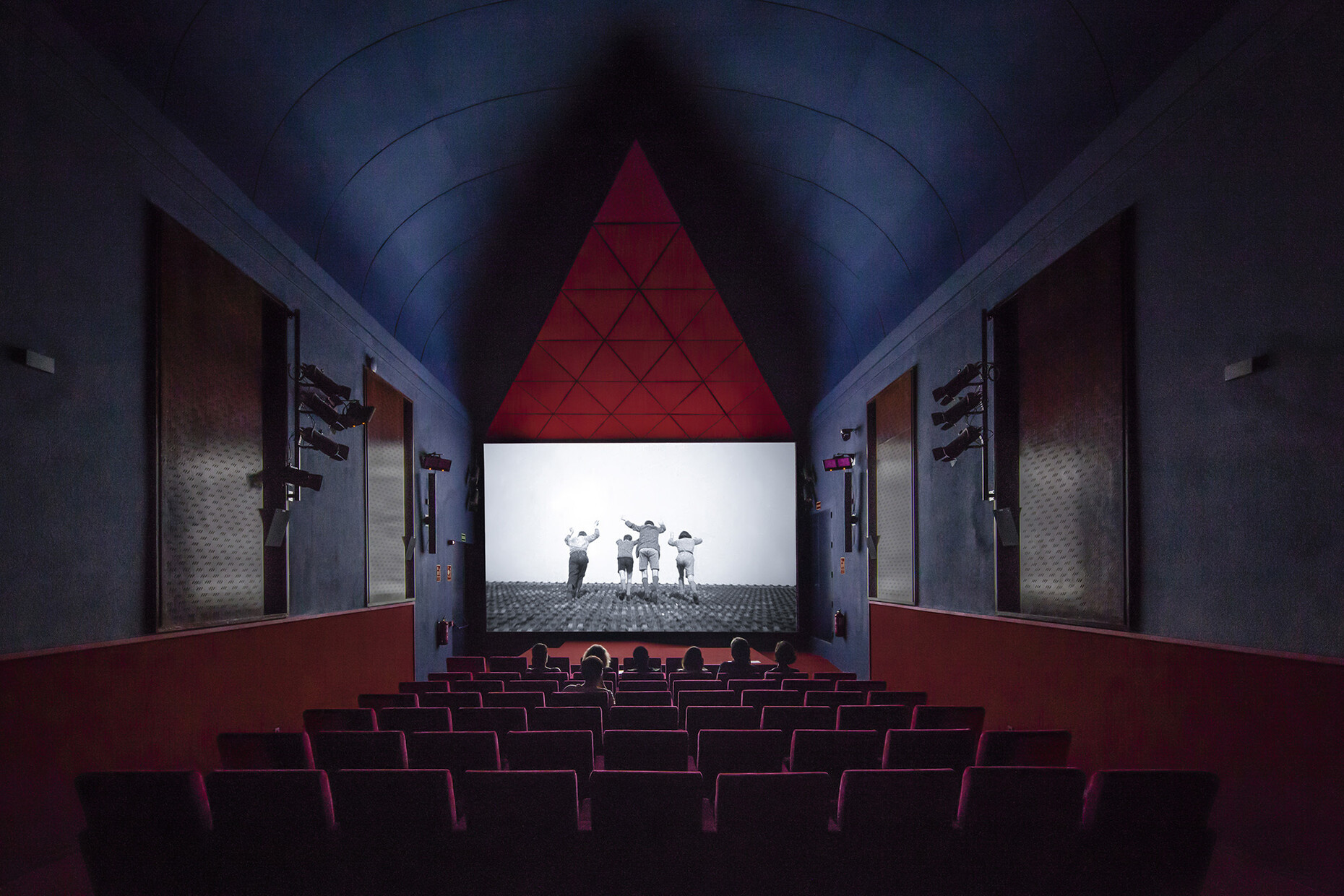The power of the triangle
The linear building in the Spanish capital used to serve as a general hospital, designed by architects José de Hermosilla and Francisco Sabatini in the 18th century. During extensive renovation work in 1987, the underground Sabatini Auditorium was added as an extension by Jaume Bach and Gabriel Mora. Its stylistic elements, such as the slight curvature of the ceiling, which culminates in a large triangle, were to be retained for its new use as a cinema. Bach Arquitectes returned to their project to carefully renew the room: the former translation booths were removed, the slope of the seating area was increased and a new image and sound system was installed. The central loudspeakers are now concealed behind the triangle, which hangs above the screen like a large emblem and whose surface contributes to optimal acoustics in the room.
The new component in the entrance area, a triangular storage space, guides guests to the rear of the hall, whilst maintaining a dialogue with its shape. The striking chimney red that floods the foyer extends along the heavy velvet curtains of the passageway into the screening room, where it reaches the rows of chairs and floors, soaking them deeply in colour and climbing up the wall until the midnight blue of the sky takes over. To avoid reflections, the old windows were closed with wooden panels in which small recesses were carved for indirect lighting, reminiscent of raindrops. Like a stage set, the design creates the impression of being above the earth.
At the same time, the recurring geometry, which resembles a forceful beat, intensifies the surreal atmosphere of the scene. It is reminiscent of the tradition of art cinema design and masterpieces by David Lynch, Luis Buñuel and Pedro Almodóvar. Bach Arquitectes have thus artfully repurposed the existing structure for the new screening room at the Museo Nacional Centro de Arte Reina Sofía, creating a mystical stage whose visual depth attunes guests to the transition into the world of film.
